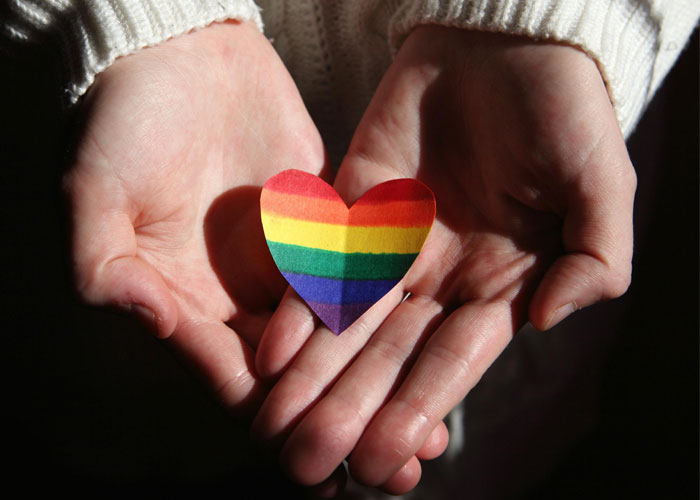Love knows no boundaries, and neither does the desire to become a parent. In a world that is increasingly recognizing the rights and experiences of LGBTQ+ individuals and couples, the journey to parenthood has taken on a more colorful and inclusive hue. In a world where love comes in all shapes and sizes, the desire to become a parent is universal.This article explores the exciting landscape of LGBTQ+ fertility adventures in the United States, the United Kingdom, and Europe, shedding light on the challenges, triumphs, and resources available along the way.
United States: Unpacking the Drama
Over in the land of freedom and fancy coffee shops, the United States is making strides in recognizing LGBTQ+ family-building options. Gay Parents To Be recently dropped some knowledge in their blog post titled “What Does LGBTQ+ Infertility Look Like?” It’s like a crash course in fertility drama where LGBTQ+ couples tackle surrogacy, adoption, and IVF like true rockstars.
If you’re in the USA and ready to dive into the rainbow world of parenting, the Child Welfare Information Gateway is your new BFF. It’s got all the deets on LGBTQ+ families, adoption, and foster care. Legal stuff? Covered. Confidence boost? Delivered.
United Kingdom: Striving for Equality
Across the pond in the UK, they’re on a mission to put an end to LBQ+ discrimination and ensure that fertility services are equally accessible. Human Rights Watch spilled the tea on England’s quest to eliminate LBQ+ discrimination in fertility services. It’s all about leveling the playing field and ensuring that LBQ+ individuals have the same shot at parenthood as anyone else.
The Women’s Health Strategy in England is like the government’s love letter to LBQ+ individuals. It talks about inclusive healthcare services and fertility options, all wrapped up with a fancy British bow. Cheers to equality!
Europe: Diverse Policies and Progress
In Europe, the LGBTQ+ fertility scene is a mixed bag thanks to diverse policies and laws. The EU Access to Assisted Reproduction Treatments (ART) report is like a Eurovision song contest, but with fertility treatment accessibility as the star. It shows us the winners and the not-so-pretty performers in the European fertility rights scene.
In this section, we’ll delve into the research paper titled “European Policies on Same-Sex Relationships, Adoption, and Assisted Reproduction” to uncover the intricate web of policies, regulations, and progress related to LGBTQ+ family planning in European countries.
Europe, often celebrated for its cultural diversity, presents a patchwork of legal frameworks and attitudes towards LGBTQ+ rights and family-building. The research paper examines the policies and regulations concerning same-sex relationships, adoption, and assisted reproduction in various European nations. It serves as a comprehensive guide for understanding the evolving legal landscape in this dynamic continent.
Same-Sex Relationships: Recognizing Love
 The paper starts by analyzing how European countries address same-sex relationships. It sheds light on whether these nations legally recognize same-sex partnerships through marriage or civil unions.
The paper starts by analyzing how European countries address same-sex relationships. It sheds light on whether these nations legally recognize same-sex partnerships through marriage or civil unions.
While some countries have embraced marriage equality, others still lag behind, offering only limited legal recognition. This disparity reflects the ongoing struggle for LGBTQ+ rights in Europe.
Adoption: The Quest for Parenthood
The research delves into the policies surrounding LGBTQ+ adoption, offering a detailed overview of adoption laws across different European nations. It examines the eligibility of LGBTQ+ individuals and couples to adopt children and highlights instances where adoption rights remain a contentious issue. The paper underscores the significance of legal recognition for LGBTQ+ parents who wish to provide loving homes for children.
Assisted Reproduction: Fertility Challenges
Assisted reproduction, including methods like in vitro fertilization (IVF) and surrogacy, is another crucial aspect explored in the research paper. It discusses the accessibility of these fertility treatments to LGBTQ+ couples and individuals, as well as the legal and ethical considerations that come into play. The paper outlines disparities in access to assisted reproduction services across European countries, reflecting the evolving nature of LGBTQ+ fertility rights.
Emerging Trends and Challenges
The research paper not only provides a historical perspective on LGBTQ+ policies but also highlights emerging trends and challenges. It discusses recent legislative changes and court rulings that have influenced LGBTQ+ rights in Europe. Additionally, the paper examines the role of transnational cooperation and organizations in promoting LGBTQ+ equality and family-building opportunities.
As Europe continues to evolve in its approach to LGBTQ+ rights and family-building, the research paper “European Policies on Same-Sex Relationships, Adoption, and Assisted Reproduction” serves as a valuable resource for understanding the diverse legal landscapes across the continent. It underscores the ongoing struggle for equality and recognition faced by LGBTQ+ individuals and couples, while also highlighting the progress that has been made in certain countries.
So there you have it– love is love, babies are babies, and the LGBTQ+ community is on a fabulous fertility journey of its own. the path to parenthood for LGBTQ+ individuals and couples is a testament to the power of love and the resilience of the human spirit. As societies become more inclusive, the rainbow of family possibilities continues to expand, proving that love knows no boundaries.

